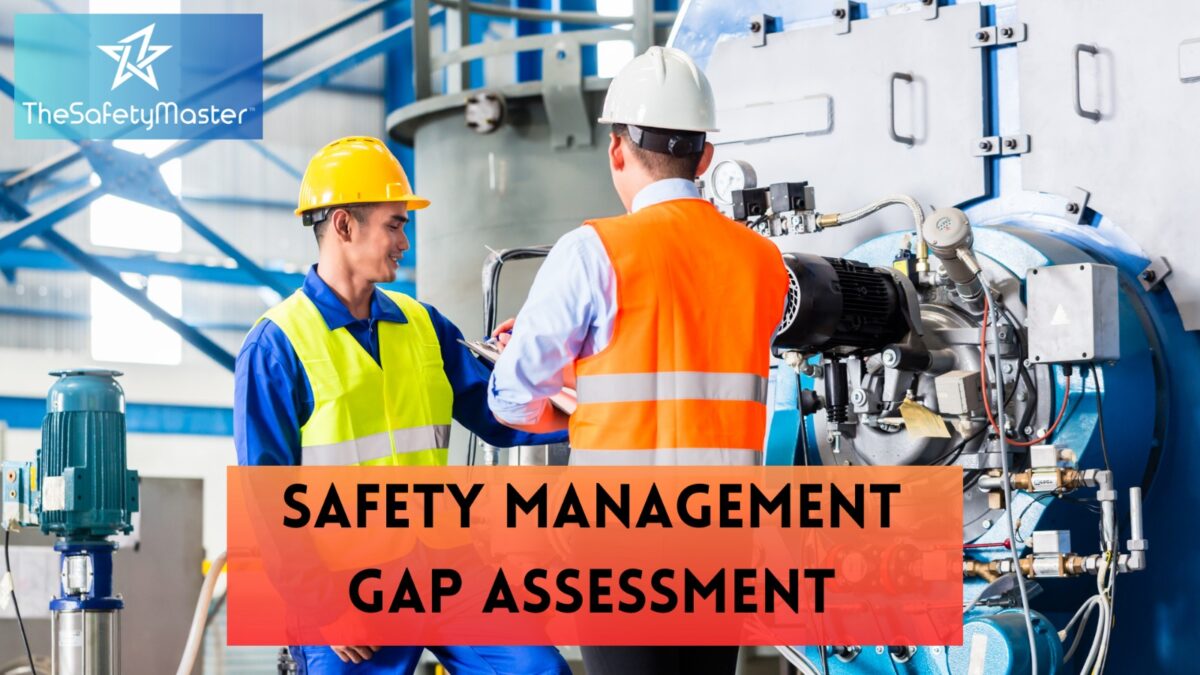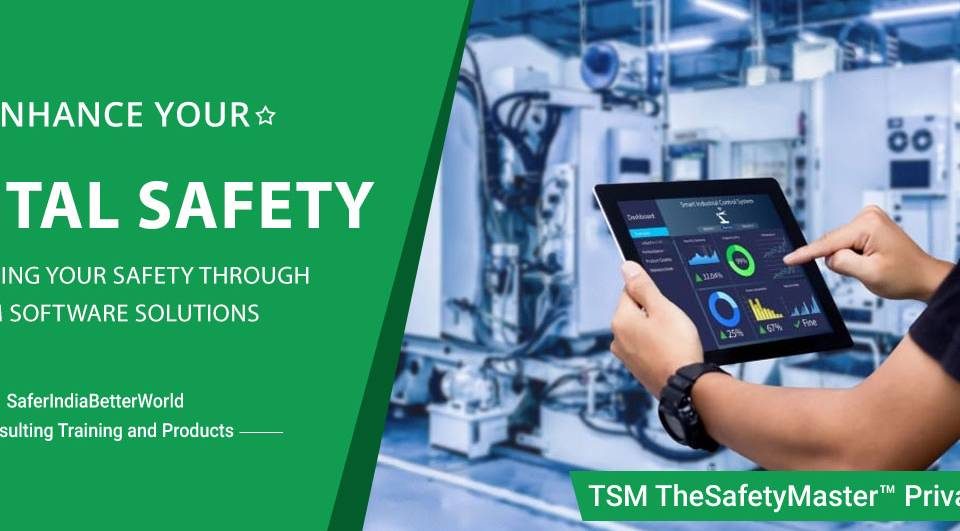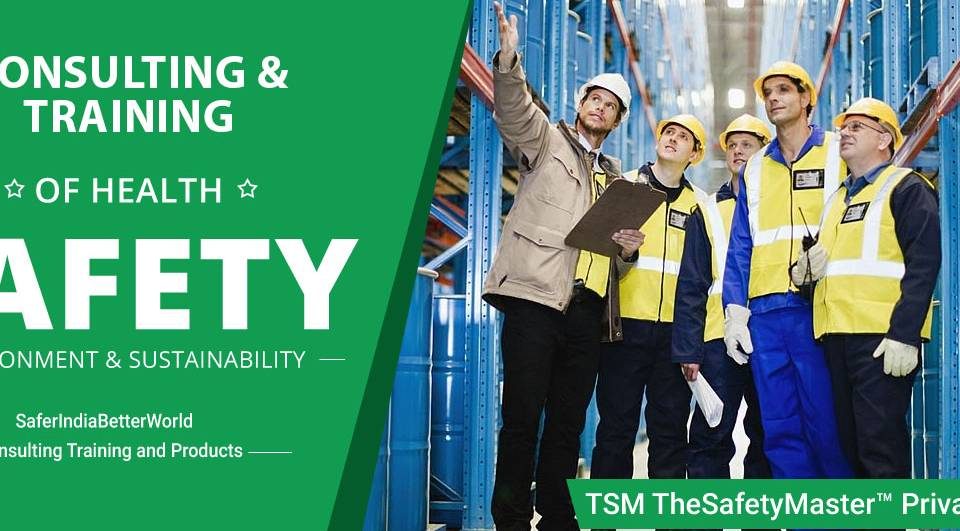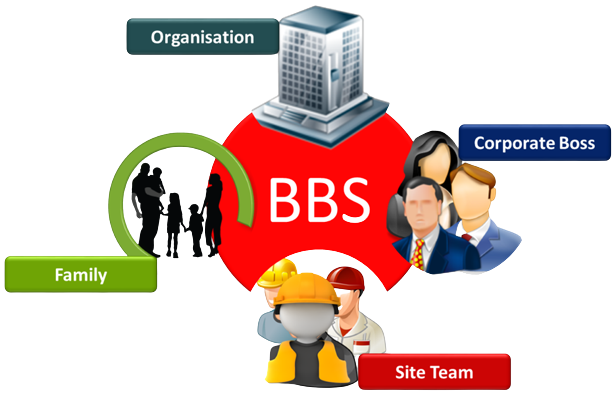Uncovering the Hidden Risks: A Comprehensive Safety Management Gap Assessment

Understanding the Benefits of Ergonomics Assessments for Better Employee Health and Performance in Indian Industries
November 1, 2023
The Role of Safety Audits in Mitigating Occupational Hazards: Insights from Indian Manufacturing Industries
November 3, 2023In this article, we develop deep into the intricate world of safety management and shed light on a critical aspect that often goes unnoticed – the hidden risks. We unravel the complexities involved in identifying and assessing these risks, providing you with a comprehensive safety management gap assessment. Prepare to be enlightened as we explore the potential hazards that lurk beneath the surface and discover the powerful solutions that await you. Get ready to leave no stone unturned in your quest for a safer and more secure environment. Take the first step towards safeguarding your organization and embark on this revealing journey with us. Ready to uncover the hidden risks? Let’s get started!
Introduction
Welcome, esteemed readers, to an enlightening discourse on the intriguing subject of Uncovering the Hidden Risks: A Comprehensive Safety Management Gap Assessment. In an era where safety and risk management have become paramount concerns for organizations worldwide, it is imperative to delve deeper into the concept of safety management gap assessment. Through this article, we aim to shed light on the significance of this assessment and uncover the hidden risks that may lurk within an organization’s safety management practices. Prepare to embark on a journey that will peel back the layers of conventional safety management approaches, revealing potential gaps and vulnerabilities that may have gone unnoticed. We will guide you through a comprehensive exploration of various factors involved in conducting a safety management gap assessment, equipping you with invaluable insights to safeguard your organization against unforeseen dangers
Understanding Safety Management Gap Assessment
Understanding Safety Management Gap Assessment: In the labyrinth of organizational safety, lies a crucial tool that can unravel the hidden risks: The Safety Management Gap Assessment. This multifaceted process aims to examine the existing safety practices within an organization and uncover any gaps or deficiencies that may compromise the well-being of both employees and stakeholders. By peering through this analytical lens, we gain a clearer understanding of how effective safety measures are implemented, monitored, and improved upon.
The beauty of a Safety Management Gap Assessment lies in its ability to delve deeper into the intricacies of safety management systems. It goes beyond surface-level observations by scrutinizing policies, procedures, training programs, incident reporting processes, emergency response plans, and data analysis systems. Through this holistic examination, organizations can identify where their safety management practices fall short and take proactive steps towards enhancing overall safety performance.
By embracing the concept of Safety Management Gap Assessment with open arms, organizations demonstrate their unwavering commitment to safeguarding their most valuable asset: human life. This introspective journey not only safeguards employees but also fosters a culture where individuals feel empowered to voice concerns and contribute to continuous improvement. In essence, grasping the essence of Safety Management Gap Assessment is akin to embarking on an odyssey towards organizational resilience and flourishing prosperity in an ever-changing world.
Importance of Conducting a Safety Management Gap Assessment
The Importance of Conducting a Safety Management Gap Assessment: In any organization, safety should always be a top priority. However, it’s not enough to simply have safety policies and procedures in place. To truly ensure a safe working environment, a comprehensive safety management gap assessment is essential. This assessment helps organizations identify potential hidden risks that may exist within their current safety management systems.
By conducting a safety management gap assessment, organizations can proactively identify areas where their safety protocols may fall short, allowing them to take corrective actions before accidents or incidents occur. This process helps create a culture of continuous improvement and demonstrates the organization’s commitment to the well-being of its employees.
Furthermore, conducting a thorough assessment promotes transparency and trust within the organization. Employees feel valued when they see that their safety is taken seriously and that measures are in place to continuously evaluate and enhance their protection. Ultimately, by prioritizing safety management gap assessments, organizations not only mitigate risks but also foster an environment where employees feel empowered and confident in their workplace’s commitment to their well-being.
Identifying the Hidden Risks in Safety Management
Identifying the Hidden Risks in Safety Management: In order to ensure comprehensive safety management, it is vital to uncover the hidden risks that may lurk within an organization’s practices. These risks often go unnoticed and can lead to serious consequences if not addressed promptly. One such risk lies in the inadequate implementation of safety protocols, where employees may unknowingly deviate from established procedures, jeopardizing their own safety and that of others.
Another hidden risk involves the underestimation of physical hazards present within the workplace. Often, seemingly harmless objects or areas can pose significant dangers when not properly identified or controlled. For instance, a cluttered storage room may result in slip-and-fall accidents, while outdated equipment could malfunction unexpectedly, causing injuries or even fatalities.
Furthermore, a lack of clear communication channels can be detrimental in terms of safety management. When employees are not encouraged to report potential hazards or incidents promptly, critical information may get lost or overlooked. This hampers the ability to identify emerging risks and take preventive measures proactively.
By diligently scrutinizing these hidden risks and implementing proactive measures to mitigate them effectively, organizations can foster a culture of safety awareness and create an environment where employees feel empowered to actively contribute towards accident prevention. Such efforts will ultimately lead to increased productivity and a happier workforce that feels secure in their work environment.
Factors to Consider in a Comprehensive Safety Management Gap Assessment
Factors to Consider in a Comprehensive Safety Management Gap Assessment: In embarking upon a comprehensive safety management gap assessment, several essential factors come into play. The first factor revolves around the engagement and commitment of top-level leadership. Without their unwavering support, the assessment process may lack direction and fail to yield fruitful results. By actively participating in the assessment, leaders can set a positive tone for the entire organization, instilling confidence in employees that safety is a top priority.
Another crucial factor to consider is the involvement of frontline workers. Their first-hand experiences and insights can shed light on potential gaps in safety management that might otherwise go unnoticed. Empowering employees to voice their concerns and ideas creates an inclusive culture of continuous improvement, fostering an environment where safety becomes everyone’s responsibility.
Furthermore, it is imperative to take into account external benchmarking and industry best practices when conducting a safety management gap assessment. By comparing one’s organization against leading industry standards, innovative solutions can be identified and implemented. This not only ensures compliance with regulations but also assists in raising the bar for safety performance, creating safer workplaces for all.
Adopting a holistic approach that encompasses these factors allows organizations to uncover hidden risks effectively while promoting collaboration between leaders and employees. Ultimately, this paves the way for robust safety management practices that prioritize prevention over reaction, inspiring confidence among stakeholders while safeguarding lives and well-being within the workplace environment.
Structuring and Implementing a Safety Management Gap Assessment
Structuring and Implementing a Safety Management Gap Assessment: To effectively conduct a comprehensive safety management gap assessment, it is crucial to establish a well-structured framework. This entails defining clear objectives, determining the scope of the assessment, and establishing the necessary resources and timeline. By meticulously planning each step, organizations can ensure that no aspect of their safety management system goes overlooked.
One way to structure the assessment is by breaking it down into smaller components, such as organizational policies and procedures, safety training programs, incident reporting processes, emergency response plans, and safety data analysis systems. Each component should be examined individually to identify any existing gaps or areas for improvement.
Implementing the assessment requires collaboration between various stakeholders within an organization. An interdisciplinary team can bring together expertise from different departments to assess safety practices comprehensively. Additionally, involving employees at all levels fosters a culture of shared responsibility towards safety.
By meticulously structuring and implementing a safety management gap assessment, organizations not only minimize hidden risks but also lay the foundation for continuous improvement in their overall safety performance. Through this proactive approach, companies can enhance workplace safety measures while ensuring employee wellbeing remains at the forefront of their operations.
Assessing Organizational Safety Policies and Procedures
Assessing Organizational Safety Policies and Procedures: Embarking on the journey of a comprehensive safety management gap assessment necessitates a deep dive into an organization’s safety policies and procedures. Here lies the foundation of a robust safety culture. It entails meticulously scrutinizing the existing protocols, guidelines, and frameworks that govern safety practices within an organization.
Delving into this realm unveils a plethora of opportunities for improvement. Are the policies up-to-date with current industry standards? Do they effectively address potential hazards and risks? Are they easily accessible to all employees? Analyzing these key aspects sheds light on areas where organizational policies may fall short, allowing for strategic enhancements that promise heightened safety awareness.
But this endeavour is not just about identifying shortcomings; it is also an opportunity to celebrate achievements. Recognizing exemplary policies and procedures can inspire teams to build upon their successes, fostering a sense of pride in their proactive approach towards safeguarding personnel, assets, and reputation. By embracing this assessment as a catalyst for positive change, organizations can cultivate an environment in which safety becomes ingrained in every aspect of their operations.
Evaluating Safety Training and Education Programs
Evaluating Safety Training and Education Programs: Within the realm of safety management, an often overlooked yet crucial aspect is the evaluation of safety training and education programs. These programs are designed to equip employees with the knowledge and skills necessary to navigate potential risks in the workplace. However, not all training initiatives yield effective results, which is why a comprehensive assessment is imperative.
When evaluating safety training and education programs, it is essential to consider several key factors. Firstly, the content of these programs should be meticulously scrutinized to ensure it aligns with industry best practices and regulatory standards. The materials should be up-to-date, engaging, and accessible to all employees.
Furthermore, the delivery methods employed in these programs need careful examination. Different individuals possess varying learning styles; therefore, a range of instructional techniques should be implemented. This may include interactive workshops, simulations, e-learning modules or hands-on exercises tailored to accommodate diverse learning preferences.
Lastly, evaluating the effectiveness of these programs requires a commitment to continuous improvement. Regular feedback from participants can provide valuable insight into program strengths and weaknesses. By integrating this feedback into future revisions, organizations can enhance their safety training initiatives and empower employees with knowledge that ensures a safer working environment for all.
So let us take a moment to appreciate the immense value that lies within well-structured safety training and education programs. They epitomize proactive measures aimed at fostering a culture of safety consciousness among employees while equipping them with vital skills needed for hazard identification and risk mitigation. Through thoughtful evaluation and improvement strategies, organizations can harness these programs as powerful tools towards achieving a harmonious balance between productivity and employee well-being on their journey towards success.
Analyzing Incident Reporting and Investigation Processes
In this crucial aspect of safety management, organizations delve into the intricacies of incident reporting and investigation processes. Here lies a hidden world that can unveil valuable insights and help mitigate future risks. It is within the meticulous examination of these practices that a company’s commitment to fostering a culture of safety can truly shine. Every incident holds within it the potential for growth and improvement. By establishing a robust incident reporting system, organizations empower their employees to contribute to the ongoing enhancement of workplace safety. The analysis of incident reports unveils trends, patterns, and recurring issues, enabling proactive measures to be taken before accidents occur.
Investigation processes serve as a gateway to understanding the root causes behind incidents. Through comprehensive investigations, organizations can identify system failures, human factors, or external influences contributing to accidents. By doing so, they pave the way for implementing targeted corrective actions and preventative measures that foster continuous improvement in safety management.
In this realm lies an opportunity for organizations not only to rectify shortcomings but also to embrace an optimistic outlook on safety. By viewing incidents as learning opportunities rather than failures, companies can instil confidence in their workforce while promoting a culture where everyone feels empowered to contribute towards safer work environments.
Reviewing Emergency Preparedness and Response Plans
Reviewing Emergency Preparedness and Response Plans: In the realm of safety management, emergency preparedness and response plans are crucial elements that can save lives and minimize damage during unforeseen crises. When conducting a comprehensive safety management gap assessment, thoroughly reviewing these plans becomes paramount.
One must meticulously scrutinize the adequacy of emergency protocols, evaluating whether they encompass all potential scenarios and have clear guidelines for action. The plan’s comprehensiveness should account for natural disasters, technological failures, medical emergencies, and even unexpected human actions.
Furthermore, an effective emergency response plan should not only focus on reactive measures but also emphasize proactive strategies to prevent or mitigate the impact of potential disasters. By addressing possible vulnerabilities and implementing measures to strengthen readiness, organizations can instil confidence among employees and create a culture of safety that fosters resilience.
By thoroughly examining the emergency preparedness and response plans as part of a safety management gap assessment, organizations can ensure that they are well-prepared to handle any crisis. This proactive approach not only safeguards lives but also enhances trust among stakeholders while instilling a sense of security within the workforce.
Examining Safety Data Analysis and Reporting Systems
Examining Safety Data Analysis and Reporting Systems: Within the realm of safety management, a critical aspect that often goes unnoticed is the analysis and reporting of safety data. Many organizations collect vast amounts of data related to incidents, accidents, near misses, and safety performance indicators. However, without a robust system in place for analyzing and reporting this data effectively, valuable insights can remain hidden.
A comprehensive safety management gap assessment involves delving into the intricacies of an organization’s safety data analysis and reporting systems. This examination aims to identify any gaps or shortcomings that may hinder the organization’s ability to proactively address potential risks. It entails scrutinizing the methods employed for data collection, storage, analysis techniques utilized, and the clarity and accuracy of reported findings.
Taking a closer look at these systems not only reveals areas for improvement but also enables organizations to harness their wealth of information for proactive risk mitigation strategies. By implementing advanced analytical tools and streamlining reporting processes with clear metrics and benchmarks in mind, organizations can actively identify emerging patterns or trends that may point towards potential risks. With an optimized safety data analysis and reporting system in place, organizations can confidently navigate their operations towards a safer future.
Addressing the Identified Gaps in Safety Management
The final critical step in a comprehensive safety management gap assessment is addressing the identified gaps within the organization’s safety management system. Once these gaps have been identified, it is imperative to take swift action to rectify them and ensure the safety and well-being of all employees. One effective approach to address these gaps is through targeted training and education programs. By investing in continuous learning and development opportunities, organizations can equip their employees with the necessary knowledge and skills to mitigate risks effectively. Additionally, fostering a culture of safety awareness and responsibility can empower individuals at all levels to actively contribute to a safer work environment.
Another essential aspect of addressing identified gaps is revisiting and refining organizational policies and procedures related to safety management. This process involves clear communication, collaboration, and involvement of key stakeholders to ensure that policies are updated, aligned with industry standards, and tailored specifically for the organization’s unique needs.
Furthermore, implementing robust incident reporting and investigation processes is crucial in closing the identified gaps. Encouraging open communication channels for reporting incidents or near-misses enables prompt identification of potential hazards or weaknesses in existing systems. Subsequently, thorough investigation procedures should be initiated to identify root causes, allowing for informed decision-making regarding corrective actions.
Taking these proactive steps not only improves safety management but also fosters a positive work environment that prioritizes employee well-being. By consistently addressing identified gaps through ongoing training, policy refinement, incident analysis, organizations inspire confidence among their workforce while cultivating a culture of continuous improvement
Conclusion
In conclusion, the process of conducting a comprehensive safety management gap assessment is crucial in unveiling the hidden risks that may jeopardize the well-being of an organization and its employees. By meticulously evaluating safety policies and procedures, training programs, incident reporting processes, emergency preparedness plans, and data analysis systems, organizations can identify areas of improvement and proactively address potential risks. Through this diligent approach to safety management, organizations can create a culture of continuous improvement and ensure a safer working environment for all. Remember, the journey towards enhanced safety begins with acknowledging the gaps and taking meaningful steps to bridge them; let us forge ahead with confidence and optimism in our pursuit of a safer tomorrow.




